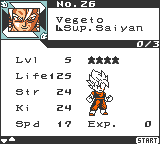You will need:
- * A bottle of purified, steam-distilled eucalyptus oil. You want the straight stuff, not diluted in any way. Small bottles are sold in the aromatherapy sections of health stores, or you can get larger bottles at online sites like Lucky Vitamin for about the same price. Keep in mind that eucalyptus oil is poisonous if swallowed by children and can cause dermatitis if accidentally spilled on the skin in quantity. It might be a good idea to keep the big bottle locked up and use a smaller bottle for your work and refill it periodically.
* A supply of cotton swabs. Use the kinds with paper sticks as the eucalyptus oil may dissolve the plastic ones.
* A box of facial tissues, the "hypoallergenic" kind with no added lotion, fragrance, or aloe vera.
* A small craft knife, the less sharp the better. (I got mine in a set at Dollar Tree and use the really sharp Xacto knife only for slitting tape as it tends to slice into the paper.)
* A plain cardboard surface (an old Priority Mail box is ok, but work on the blank side).
* A well ventilated space to work with good light. I set up in my garage with the door up, as it gives me lots of air, lots of light, and not much breeze. A room with a fan and open windows will also do. (Eucalyptus oil is allegedly soothing in small amounts, but can be rather overwhelming in the quantities you’ll use if it builds up in the air you breathe. Tell your landlady what you're doing so she doesn't call the cops. Don't think about smoking or having any sort of open flame nearby.)
* A stack of sketches with yucky tape on them. Some is yuckier than others: frosted tape is often the most stable, yellow-colored tape the most likely to cause trouble. If you hold the sketch up to the light and see that the part covered by tape is more translucent than the rest of the paper, that's an early sign of damage and a warning to get the tape off asap. (It's worth noting that the Library of Congress considers all forms of adhesive tape potentially dangerous to paper collectables, including allegedly acid-free scrapbooker's tape.)
- DO NOT USE THIS PROCESS TO REMOVE TAPE FROM CELS!
1. Wash your hands, before and frequently during the process, as dirt and oils from your skin can also cause damage down the road. Some collectors use inexpensive throw-away cotton gloves during this process.
2. Put the sketch down on the cardboard base, tape side up. Use one of the swabs to dab eucalyptus oil all around the edges of the tape. (Do this for no more than 4 inches of tape at a time, as the oil evaporates quickly).
3. Turn the sketch over and saturate the paper directly under the tape with the eucalyptus oil. Don’t be cheap – the more you use, the cleaner the tape will come off.
4. Turn the sketch over again and use the craft knife to get under one end of the tape and slide the blade between the tape and the paper. It should separate from the paper smoothly but reluctantly. (To me it feels like the resistance you sense while slicing cheddar cheese.) When you get enough of the end up, you could grab it with your fingers and peel it the rest of the way. But go slowly and watch out that the paper doesn't start peeling up with the tape. (This happens more often with thin yellow or pink paper than on thicker genga paper.) If you see a peel starting, stop, turn the sketch over, apply more eucalyptus oil, and start again from the other end. For thin paper, I stick with the craft knife and go more slowly than usual.
5. When the tape is off, soak the swab again in the eucalyptus oil and flood the area where the tape used to be. It's the adhesive, not the tape, that causes the damage, so you want to saturate the area to soften as much of the remaining adhesive as you can. You will often see the adhesive "resist" the oil and leave a dry spot underneath. When you see the oil soaking evenly through the area, that's a sign that you are removing the worst of the glop.
6. Take a paper tissue and rub the place carefully, looking to see that the adhesive is coming up. When I can, I rub in one direction, from the sketch to the cardboard base. When you’re done, the paper should look “flat,” not “shiny.” This can take more time than you think. I generally add more eucalyptus oil after the first effort and try to get up all of the stickiness. One batch of tape I encountered actually had adhesive that came off in globules and chunks, and there was so much of it I had to run the craft knife gently over the area to scrape it off. Change tissues regularly (I use the old ones to collect the removed tape, which can be unspeakably gross and try to reapply itself to everything in sight.)
7. Let the sketch dry out thoroughly. Overnight seems to be more than adequate. Put the tape, used swab, and tissues in a trash bag and put them outside, unless you're very attached to the smell of eucalyptus.
8. Bag the sketch to keep now-separate pieces together and prevent any damage that remaining adhesive might cause to sketches stored next to it. There are supposedly archival tapes that can be used to reunite pieces, and I've used this at times (but note the Library of Congress's warning above), but in thin slivers on the very margins of the sketches.
- DO NOT USE THIS PROCESS TO REMOVE TAPE FROM CELS!
* Eucalyptus oil does not lift graphite or printed ink on layout paper. It does lift anything that has been photocopied. So if you use it on copy layouts, be very, very cautious and expect some degree of smudging or image loss.
* Eucalyptus oil also does lift some colored pencil marks. Use caution if your sketch is done in colored pencil and test an inconspicuous part before going ahead.
* I have not used eucalyptus oil on cels and personally would not risk doing so. The solvent does soften many kinds of plastic (watch where you put that cotton swab or the lid to the bottle when you're not using it!) and so I'd expect it to damage acetate. Certainly it would dissolve trace lines and possibly damage cel paint as well.
DO NOT USE THIS PROCESS TO REMOVE TAPE FROM CELS!
* I have used it successfully to remove tape from watercolor backgrounds and found that it did not shift or lift the colors on the examples that I worked on. I can't say that this would be universally true and would recommend caution in such cases. I also found that the eucalyptus oil did tend to move dirt embedded in the paper around the tape as it soaked through the paper, so that when it dried, there was a series of "tide marks" around where I'd used it. Careful blotting with a cotton ball soaked in the oil was necessary to redistribute the dirt and soften this "ring around the tape spot." (One library site suggested filling a tray with the solvent and soaking the whole sketch in it to avoid such "tide marks.")







